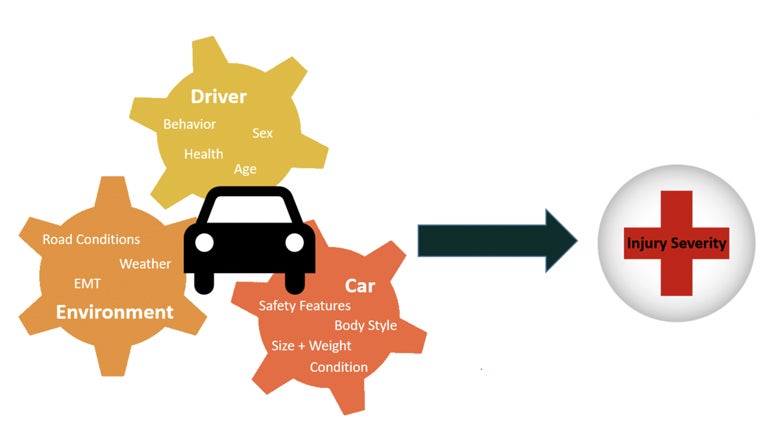
Author: Norma Faris Hubele ’84
Founder of The Auto Professor
As an undergraduate mathematics major, I was more interested in numbers than formulas. My graduate program in operations research and statistics followed by doctoral degree in computer and systems engineering was a perfect fit for me: analysis grounded in theory with practical applications. That education set me on an unpredictable path toward launching a startup company dedicated to consumer information in car safety.
In the 1970s, coincident with the introduction of computing, there was the movement toward evidence-based decision making. Reflecting this movement, the federal government laid the foundation for quantum leaps in improvements in automotive safety. Two important programs started in this decade: laboratory crash testing and data collection about crashes on our nation’s roadways. The crash testing with dummies and its companion Safety Star rating system has been widely credited with improving automotive safety. However, the data collected about the actual experience of people in crashes on the roadways has also been instrumental in supporting the National Highway Transportation Safety Administration’s (NHTSA’s) mission to save lives, reduce injuries, and reduce costs due to crashes.
As a result of this data collection directive, two information-gathering initiatives were born: sampling a cross-section of crashes and collecting a census of fatal crashes. The intent is to capture, in an efficient and effective manner, key elements of the factors contributing to occupant and pedestrian injuries associated with crashes (see Figure 1 above).
The NHTSA’s Fatality Analysis Reporting System (FARS), the census system, has evolved over the past 40 years. In its current state, this annual database has over 140 descriptive elements about each fatal crash—including environmental information (time, place, weather, etc.), vehicle information (make-model-year, impact location, etc.), occupant details (age, sex, seat-belt usage, etc.) and when applicable, pedestrian/cyclist information.
In the popular press, this FARS data set is the basis for such statistics as the national vehicular fatality rate, the number of fatalities associated with drunk driving, the effect of graduated teen driving laws, and distracted driving-related deaths (see Figure 2 above). While these general trend statistics may be interesting, the real value of FARS lies in being able to estimate the number of lives saved. The classical statistical analysis examines patterns in the fatality rates prior to an intervention (such as a law or available technology) and compares them to the fatality rates after implementation.
For example, an often-cited federal study based on FARS data estimated that in 2012, the number of lives saved exceeded 27,600. The savings were due to numerous modern safety technologies, especially the 86 percent seatbelt usage at the time. More recently, FARS has been used to investigate the effect of modern social behaviors, such as texting while driving and the use of recreational cannabis, on traffic fatalities. While publicity of tragic deaths related to these behaviors has received some media attention, statistical analysis has not yet yielded clear, definitive conclusions.
Car crash statistics are also often used in more controversial settings. For example, the federal government may use these statistics to support recalls, while at the same time, manufacturers may use a different type of statistical analysis to defend against recalls. State legislatures may use fatality rates in other states as evidence of efficacy when proposing new local laws. My career as an expert witness has centered on using crash statistics in product liability litigation over vehicles. Most often, I serve as a rebuttal to the manufacturer’s statistician, refuting some conclusions and putting forth a different analysis with contrary conclusions. While the role is inherently adversarial, the results are usually informative and very relevant to promoting good statistical practice in a judicial setting.
My current venture, theautoprofessor.com, provides a new safety rating system based on the experience of people in real crashes on our roadways, not laboratory testing with dummies. Offered freely to consumers, this data-intensive rating system aims to help shoppers purchase the best option for keeping their families safe.
_______
Norma Faris Hubele, who earned her Ph.D. at Rensselaer in 1984, is a university professor, consumer advocate, and automotive safety expert who has studied auto crash statistics and auto safety for over 30 years. She has provided expert witness testimony in over 100 legal cases involving vehicles, and recently created The Auto Professor, a safety rating system for automobiles.





